Well the mystery is finally solved. I can now say I know definitively who did the Low G extension of the Buescher bass saxophone that I tried in Seattle in fall of ’08. It was Lopes Instruments of Brazil. (A word of warning, their site loads extremely slowly. I wonder if their server is on dial-up?)
Thanks goes out to one of my regular readers, and Woodwind Forum members, Tom Nelson, who sent me the link to the Lopes website. After looking at their site, I remembered that I’d seen it years ago.
I also remembered seeing a picture of an identical Low G extended bass on the Bass Sax Co-op. The pic appeared in a photo album that featured bass saxes belonging to Co-op members.
Before the holidays I emailed that member and asked him if he knew who did the extension on his horn. He was kind enough to write me back and let me know that it was indeed Lopes Instruments that extended his bass to Low G.
According to their website, the Lopes workshop is 250 sq metres in size. This large shop allows them to provide a number of services including: the repair of musical instruments; the custom extension of tenor, baritone, and bass saxophones; the refinishing of instruments in lacquer, nickel, silver, and gold plate; as well as the custom adaptations of instruments for musicians with physical disabilities.
Although I didn’t see it mentioned anywhere on their site, their photo page would indicate that they also make unusually large saxophones of some kind. Unfortunately I don’t know what those would be.
Source: lopesinstrumentos.hpgvip.ig.com.br
Source: lopesinstrumentos.hpgvip.ig.com.br
This, I believe, might be a bass saxophone.
Source: lopesinstrumentos.hpgvip.ig.com.br
Their website is a wee bit outdated, since they say they are the only company that provides Low A and G extensions for saxophones. Well that might have been true in 2000, roughly when I saw their site first, and when that page was written, but we know that another Brazilian company, J’Élle Stainer, also does custom extension work on saxophones.
If you send your bass sax to Lopes, it will apparently take 6 to 8 months for the custom extension to be completed. When it comes back, the sax will look like this. (Presumably you would have your choice of finishes.)
Source: lopesinstrumentos.hpgvip.ig.com.br
Source: lopesinstrumentos.hpgvip.ig.com.br
Just to refresh you memory, this is what the bass I played in Seattle looked like:
Source: Jim Glass
If you’d like to see close up photos of the key work, make sure you check out the first post in this series.
It’s nice to finally know who did the extension on this bass saxophone I was tempted to buy. As it turns out, that particular horn it ended up going to England. Last I heard, a high end department store was using it in a window display until February.


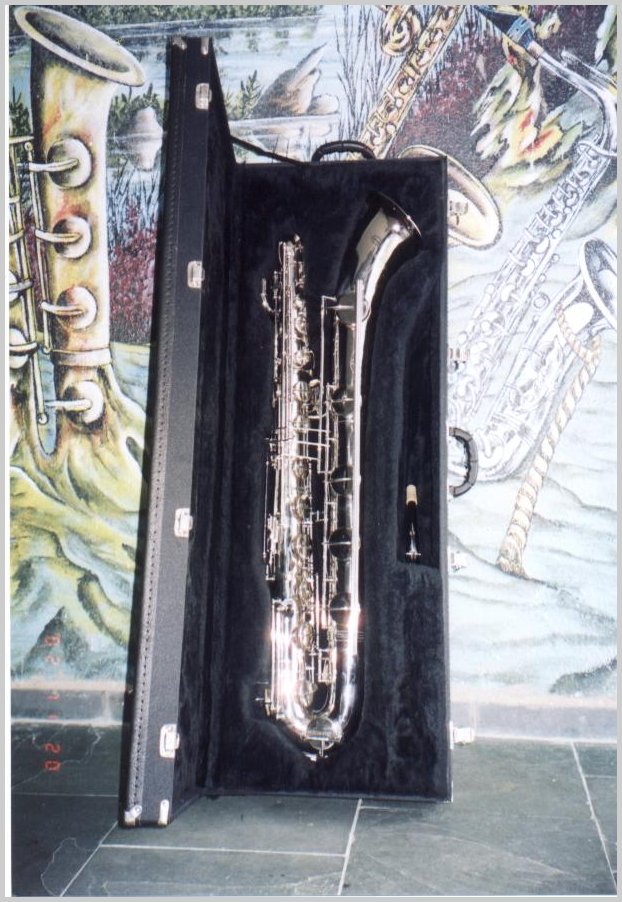
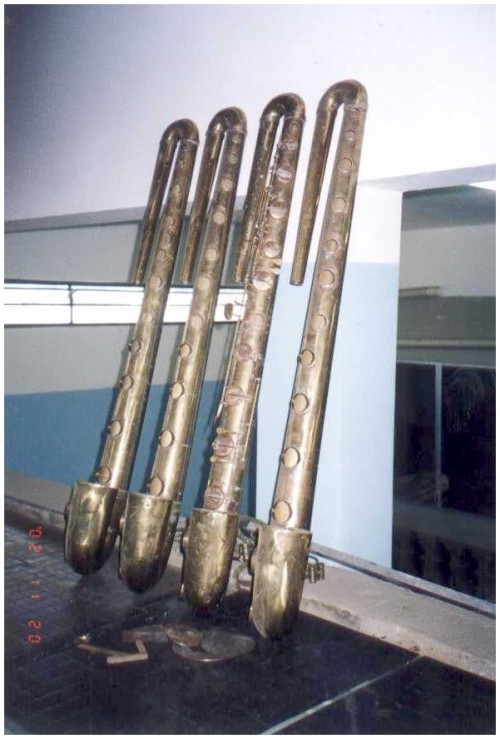
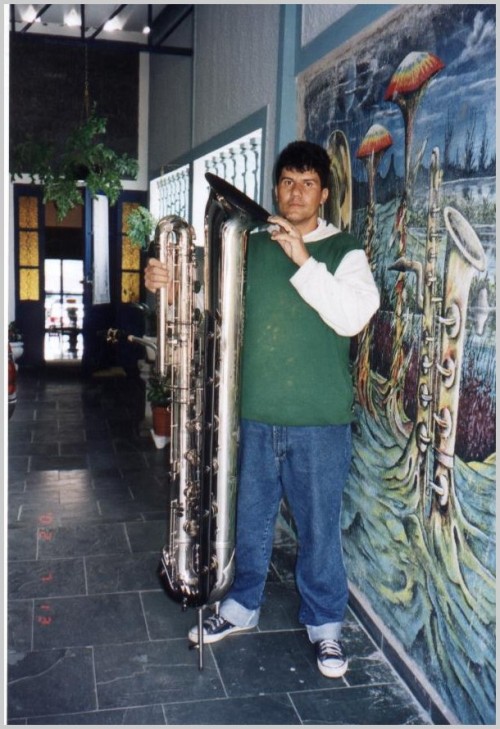

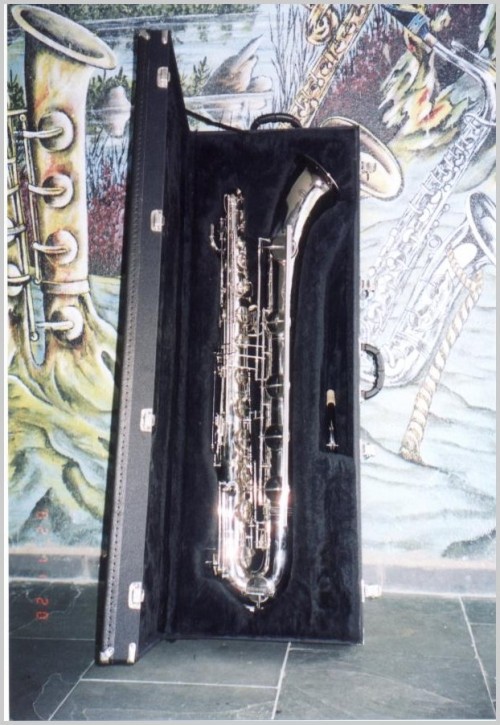
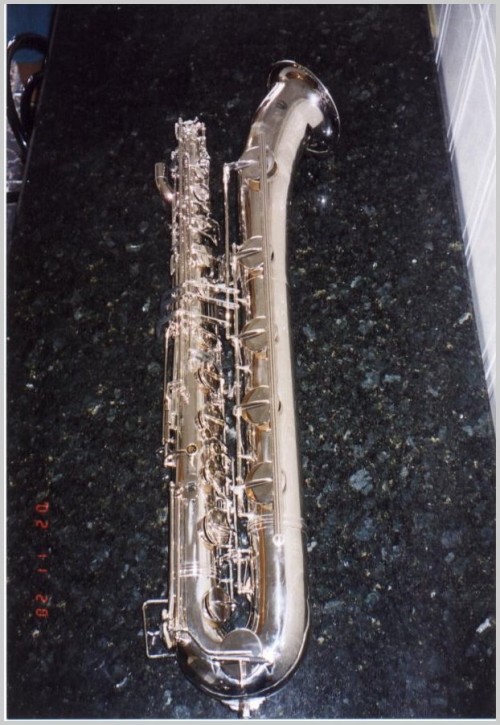
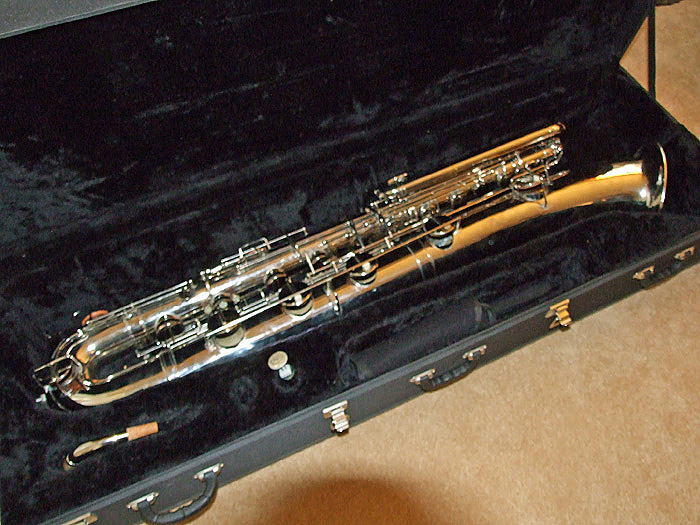

Lance is moving to Seattle…
And my low G bass is having the extension done like you had mentioned on either side of the bow. First thing that we had talked about was me wanting a low G but not wanting the chimney.
Keys are going to be linked like a bass clarinet. Low A closes Bb a la Yamaha style, but the Ab and G are independant of the low A key.
Aside from any performance issues caused by all those unlinked low note keys, my problem with these horns would be the awkwardness of having a bell taller than the horn. It must also be “interesting” to place a microphone. Although it would entail more work, I would want the bow section deepened (by pretty much the amount the peg is currently occupying) so that the bell would not extend so far upward. This would mean the pads for B and Bb would end up on the bow section, and the horn would end up a little bit taller overall, but it would retain more saxophone-like proportions. These look like ophicleides.
It’s somewhat irrelevant because I can’t see myself shipping a horn that far anyhow. It seems unlikely to come back in good condition. Martin Mods, in Florida, is still pretty far away, but at least that’s domestic. I don’t have to worry about the horn having to change hands in transit both ways, or go through Customs.
Considering the problems with my Dolnet bari’s intonation seem to be isolated to the bell notes, it seems an ideal candidate for a low G conversion. Since the bell is two pieces already, it might even be possible to stretch and salvage the existing end segment – but if not, it wouldn’t be a deal-breaker.